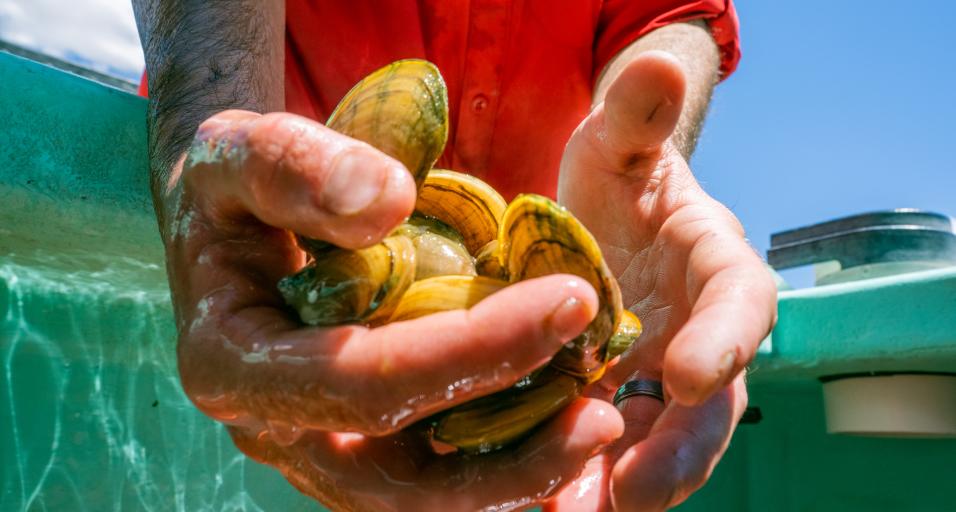Fisheries biologists with the Game and Fish Department and the National Park Service reintroduced native mussels into two rivers in Wyoming.
Wyoming is home to seven native mussel species, including the plain pocketbook mussel. In late July, biologists reintroduced 2,400 plain pocketbook mussels along the North Platte and Laramie rivers.
“They are an important native species for aquatic ecosystems,” said Stephen Siddons, Game and Fish fisheries biologist in Laramie who headed the project. “They don’t get a lot of attention because you can’t catch them on a hook and line. They’re important because they’re filter feeders. They do a lot of good work as far as cleaning up our rivers naturally. It also is part of our state mandate to conserve those species that we have and take care of what we got.”
Siddons said Game and Fish has found plain pocketbook shells throughout the North Platte River drainage from the Nebraska state line up to Gray Reef Reservoir near Casper. But since 2008 only one live mussel has been found, and that was in the Laramie River. Wyoming is the western range for the mussels, and Siddons said historically there used to be a lot of them in the state. But despite search efforts, which included DNA surveys, Game and Fish personnel couldn’t find any.
“With that we came to the conclusion they were extricated from the state,” Siddons said.
But thanks to the Nebraska Game and Parks Commission, who raise plain pocketbook mussels in hatcheries, Game and Fish worked out an agreement to get mussels and try to reestablish a population.
“It seemed too easy of an option not to pursue and see if we can do the same thing here,” Siddons said.
One of the relocation spots was at the Fort Laramie National Historic Site, which is managed by the National Park Service. Game and Fish and National Park Service personnel were involved in the planting. The second location is on the Lummis Ranch.
Siddons said mussels ranged in size between three-quarters of an inch to 3 inches long, and all of them were placed in the rivers individually by hand. All the mussels were marked by NGPC with three different kinds of tags to monitor over time. Siddons said he hopes to plan more mussels in both rivers over the next two to four years.
— Robert Gagliardi, WGFD



